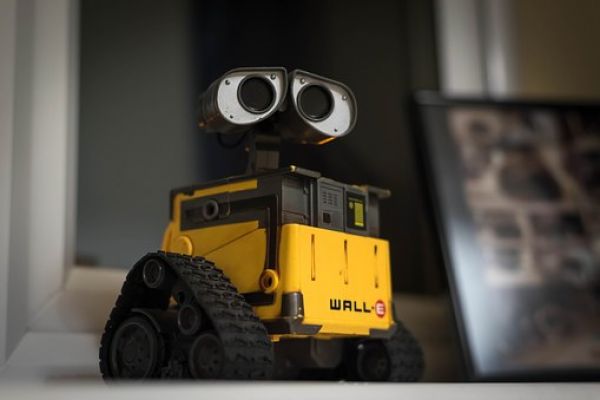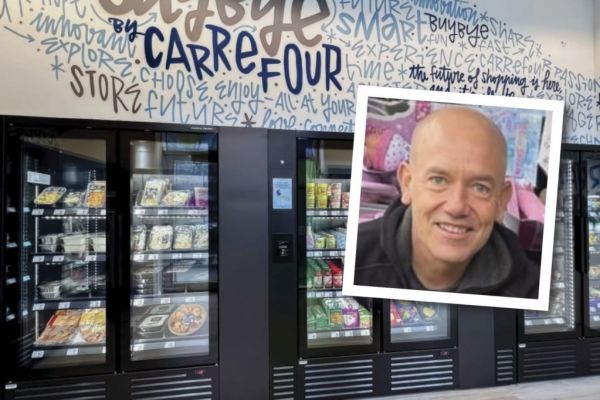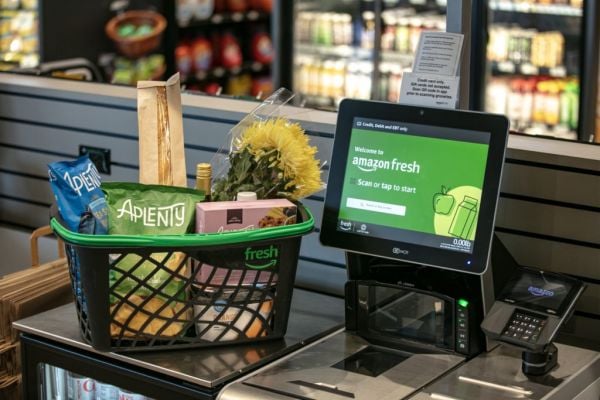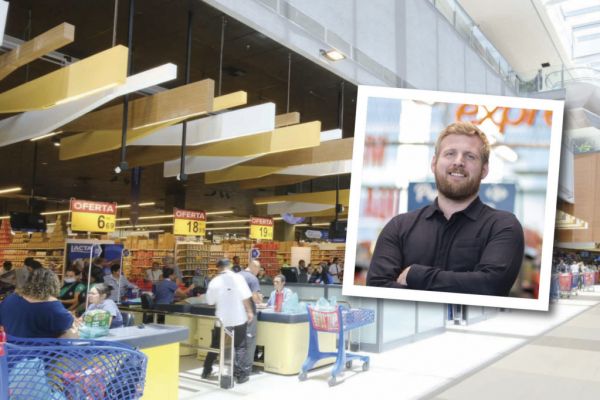It was Amazon that drove America’s warehouse operators into the robot business.
Quiet Logistics, which ships apparel out of its US warehouse, had been using robots made by a company called Kiva Systems. When Amazon bought Kiva in 2012, Quiet hired scientists.
In 2015 it spun out a new company called Locus Robotics, which raised $8 million in venture capital. Last year, Locus unveiled its own warehouse robotics solution called the LocusBot—first using it for its own business, then selling them to companies that ship everything from housewares to auto parts.
Now, Locus has landed a bigger fish: It’s selling its robots to DHL Worldwide Express, the world’s largest third-party logistics company.
Locus’s software directs a LocusBot to a shelf where the specific item is located. A human worker meets it there, reads a description of the item off an iPad, and drops it into a plastic bucket mounted on the machine. The idea is that the robot does the majority of the traveling, while the worker simply patrols a specified zone.
“The first trend was to try to replace humans,” said Rick Faulk, chief executive of Locus. “Now it’s about humans and robots working collaboratively.” See it in action on Youtube.
Robot Arms Race Triggered By Online Shopping
Locus isn’t alone. Amazon’s acquisition of Kiva set off an arms race among robot makers and shippers across the US who scurried to keep up with the e-commerce giant.
That includes 6 River Systems, a company founded by former Kiva employees, which this week is showing its robot at ProMat, an industry trade show in Chicago. There’s also Fetch, whose robot scuttles around warehouses and also does the walking for workers.
The big changes in warehouse robotics, said Adrian Kuman, vice president for solutions design at DHL, come in response to the rise of e-commerce.
For decades, operators were focused on the task of loading pallets and shipping them to retailers, who broke up the shipments and routed them to retail locations. Fulfilling online orders, on the other hand, requires shippers to pack boxes with a diverse set of individual items and route them on to customers’ homes.
Robots And Humans Collaborate
That shift has given way to what people in the business call collaborative robotics, in which a human warehouse worker toils alongside an autonomous machine.
At the Quiet Logistics warehouse, the robots shorten the distance a warehouse worker travels on a typical day from 14 miles to less than 5 miles, Faulk said. The robots, meanwhile, park themselves directly in front of the shelf that the worker is supposed to pick from, decreasing the risk the human will pick the wrong item.
That makes the job easier, and is appealing to employees. “Working with robots is a fun thing to do,” Faulk said.
What that means for warehouse humans is an open question. There were 939,000 people working in the industry in February, up 44% over the past 10 years, according to data from the US Bureau of Labour Statistics.
The rise of e-commerce has created a need for more hands to pick items and pack boxes. Amazon.com Inc.’s rapid shipping times have taught customers to expect goods on their doorstep in two days or less, fuelling a warehouse boom as retailers scramble to amass distribution hubs closer to their shoppers.
The Impact Of Robots On Staffing
Logistics firms can have a hard time hiring enough people, particularly during peak shopping seasons. Adding robots should ease some of the seasonal shortages, and may make the work less physically demanding.
Working conditions at US warehouses are often scrutinised for their gruelling nature: Pickers complain of exhausting shifts, sometimes in oppressive heat or biting cold. Many of the jobs are temporary, fluctuating with the shopping calendar.
Across the economy, almost 25 million jobs will be lost to automation in the next ten years, while the new technology will create 15 million jobs, according to research firm Forrester.
In the logistics business, smarter warehouse bots will likely reduce the number of people it takes to run a fulfilment centre.
“I don’t think people are investing in automation because of a near-term labor shortage,” said Karl Siebrecht, CEO at Flexe, a Seattle-based company that bills itself as the Airbnb of warehouse space. “It’s about improving productivity. Fundamentally, that means people will be replaced.”
News by Bloomberg, edited by ESM. Click subscribe to sign up to ESM: The European Supermarket Magazine.














